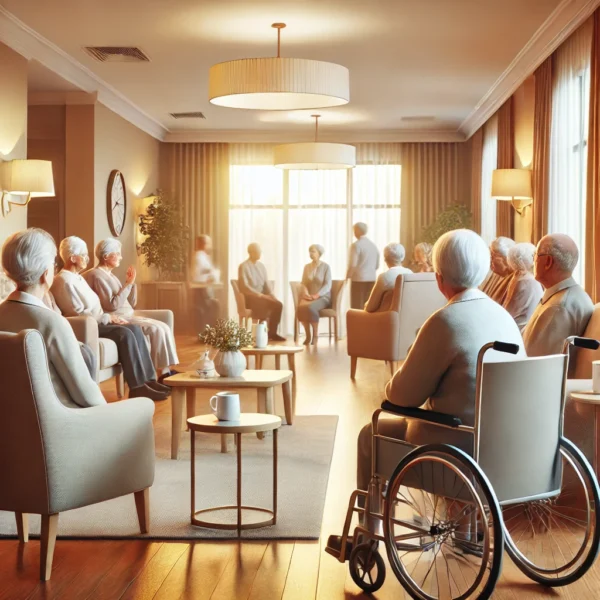
The health sector plays a crucial role in society, providing essential services to individuals at their most vulnerable times. But while healthcare professionals dedicate themselves to improving lives, the sector often overlooks opportunities to improve its financial health. One such overlooked opportunity is capital allowances. In particular, care homes, private medical practices, and other health-related facilities may be missing out on significant tax savings.
Understanding Capital Allowances in the Health Sector
Capital allowances are a form of tax relief available to businesses for qualifying expenditure on fixed assets. These can include equipment, machinery, and certain integral features of a building, such as heating systems or electrical installations. In the context of the health sector, where the setup and maintenance of facilities involve considerable costs, capital allowances present a valuable tool to offset some of this expenditure.
Unfortunately, many businesses in the health sector fail to take full advantage of these allowances. Why? Often, it’s due to a lack of awareness or the misconception that tax relief is only relevant to manufacturing or industrial sectors.
What Makes the Health Sector Unique?
The health sector has specific needs that require substantial investment in facilities, equipment, and infrastructure. Whether it’s care homes, hospitals, private clinics, or even veterinary practices, these spaces must be outfitted with high-cost items like:
- Patient call systems
- Sanitation facilities
- Lifts and elevators
- Air conditioning systems
- Specialist medical equipment
What many healthcare operators don’t realise is that a significant proportion of these costs can qualify for capital allowances, leading to substantial tax savings. For example, the cost of installing a patient call system in a care home is not just an operational expense, it could also be a tax-saving opportunity.
The Opportunity for Care Homes
Care homes represent a prime example of where capital allowances are frequently underutilised. Care home operators invest heavily in creating safe, comfortable, and practical living spaces for residents. However, much of this expenditure, on items such as fire alarm systems, kitchen fittings, and even heating, can qualify for tax relief.
Consider a care home operator who undertakes a major refurbishment project. Without a detailed capital allowances review, they might lump all expenses into a single category and miss out on the chance to identify qualifying items. This oversight could mean forfeiting tens of thousands of pounds in tax savings.
Real-Life Impact: A Case Study
Let’s look at an example of how capital allowances can transform the finances of a healthcare business. A care home operator had purchased a care home for over £1,500,000 and undertook a refurbishment project worth £600,000. By conducting a detailed capital allowances review, we identified qualifying expenditure on items such as heating and central heating systems, electrical wiring, and extraction systems. This resulted in a capital allowances claim in excess of £450,000. The resultant tax saving of approximately £90,000 could then be reinvested into enhancing care for residents.
In summary:
Purchase Price: £1,500,000
Refurbishments: £600,000
Capital Allowances identified: £450,000
Tax Saving of: £90,000
Common Misconceptions
One of the most significant barriers to taking advantage of capital allowances in the health sector is a lack of understanding. Many operators mistakenly believe that:
- They are ineligible – This is far from true. Almost all commercial properties, including those in the health sector, have some qualifying expenditure.
- The process is too complicated – While capital allowances claims do involve a detailed analysis, working with a specialist ensures the process is streamlined and compliant with HMRC guidelines.
- It’s too late to claim – You can claim capital allowances retrospectively for past qualifying expenditure. Even if a property was purchased years ago, opportunities might still exist to unlock savings.
Why the Health Sector Needs a Specialist
Capital allowances are often hidden in plain sight, requiring a deep understanding of tax law, building infrastructure, and asset categorisation. This is why working with a specialist is vital. A professional will:
- Identify qualifying expenditure that might otherwise be overlooked.
- Ensure compliance with HMRC rules.
- Maximise the value of your claim.
For healthcare providers, this could mean the difference between struggling to balance the books and having the resources to upgrade equipment, expand facilities, or improve patient care.
Final Thoughts: Don’t Let Opportunities Go Unnoticed
At a time where healthcare providers face increasing financial pressures, it’s essential to explore every available opportunity for cost savings. Capital allowances are not just a tax benefit, they are a means to reinvest in your business and deliver better outcomes for patients.
If you operate in the health sector and haven’t reviewed your capital allowances position, now is the time. Don’t let this valuable opportunity slip through your fingers. Contact our team today to uncover how much you could save and start transforming your financial outlook.
Ready to explore the hidden tax savings in your business? Contact us today to learn more about how capital allowances can benefit you!
Get in touch
Schedule a consultation with our tax specialists today:
| Salman Sadiq, Director
Email: salman@cpatax.co.uk |
Babar Khan, Director
Email: bk@cpatax.co.uk |
